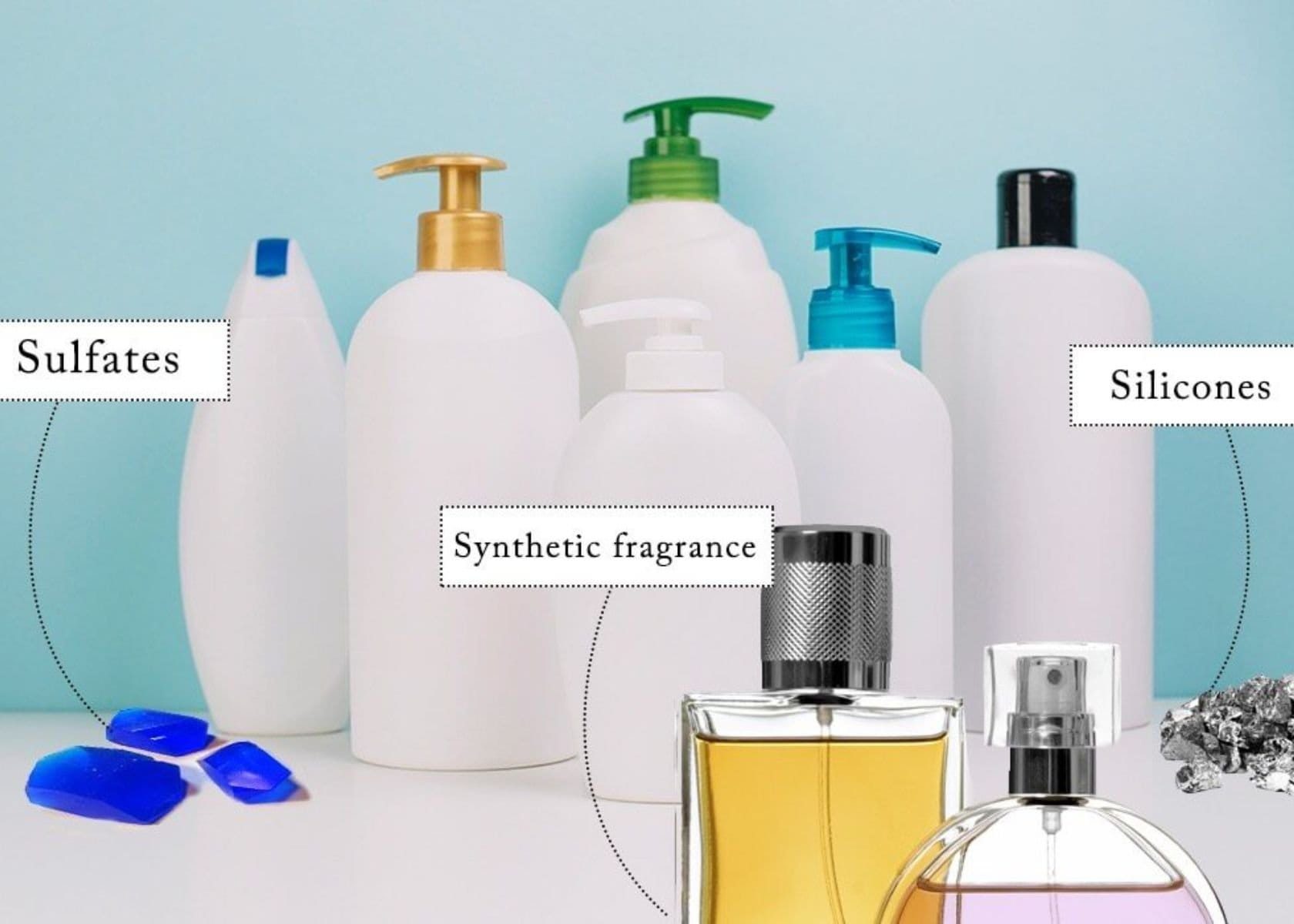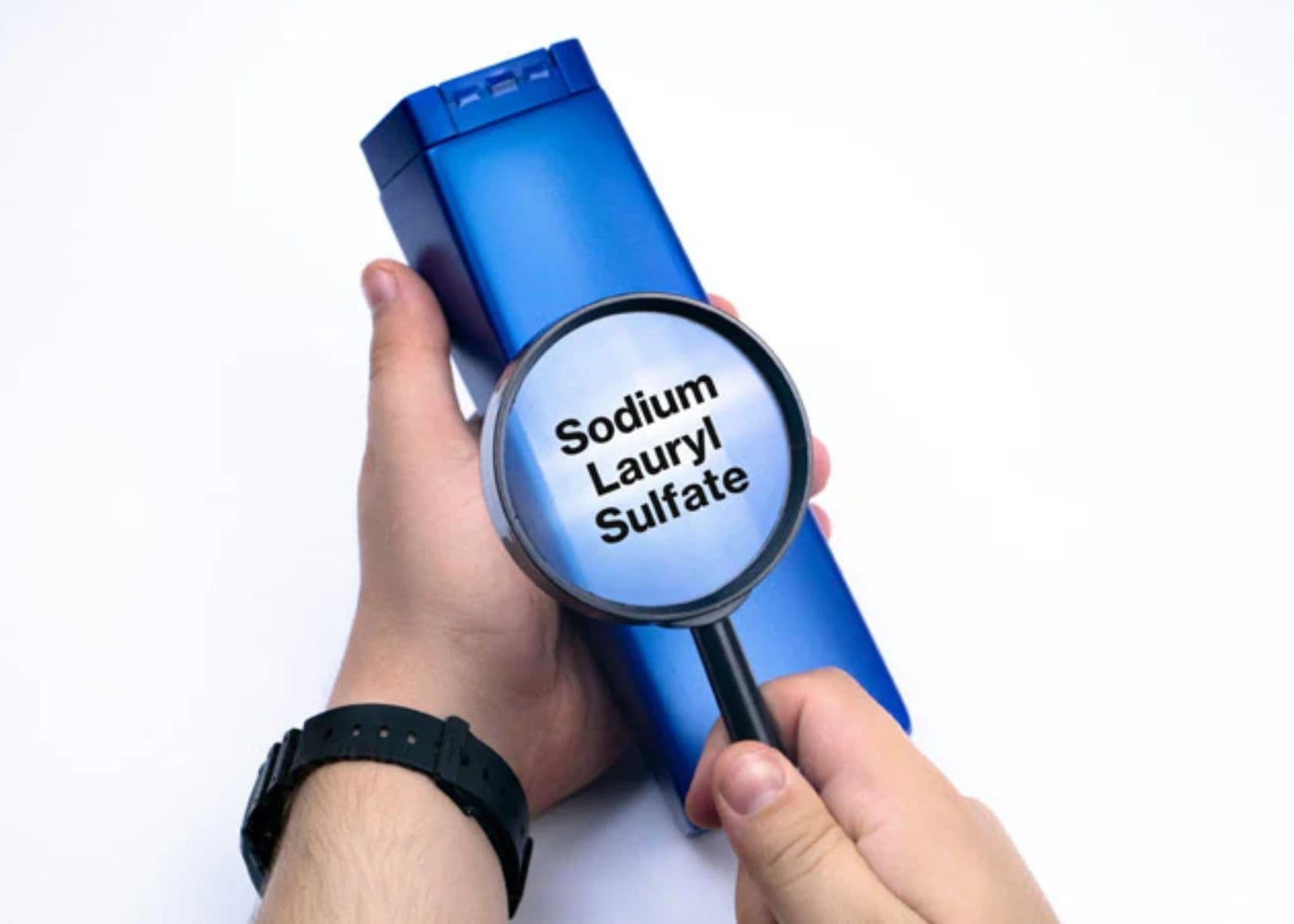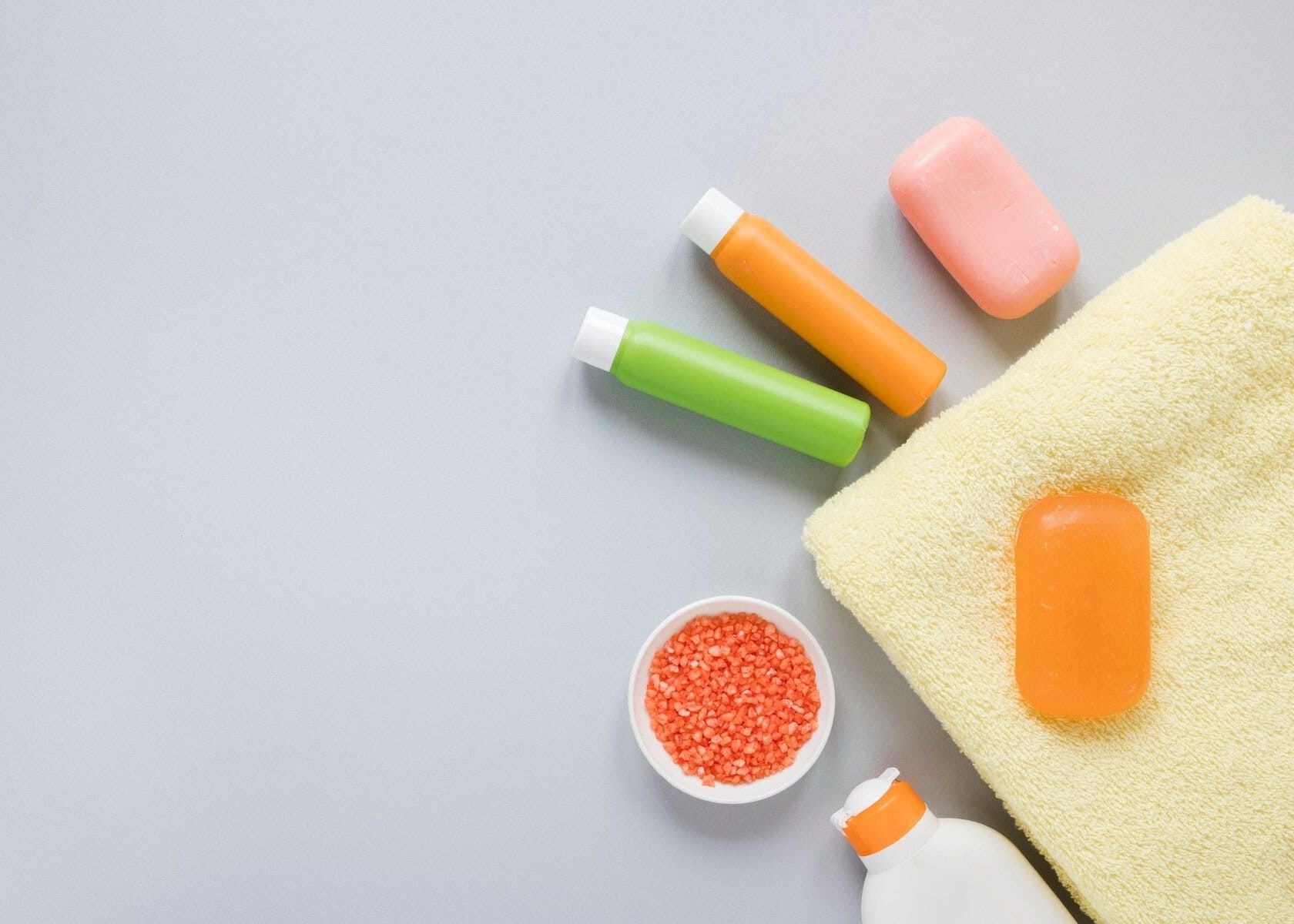Shampoo for kids might seem gentle and safe, but recent findings show that many products contain harmful ingredients like formaldehyde, a known carcinogen causing respiratory issues, and 1,4-dioxane.
Surprisingly, some baby shampoos even use detergents to numb eye tissues to prevent stinging while potentially causing irritation. The revelation about Johnson's Baby Shampoo possibly poisoning children has alarmed many parents.
As concerns grow over the toxic chemicals in children's shampoo and conditioner, parents are increasingly worried about the safety of these products if swallowed or used regularly.
In this article, we will look into the hidden dangers lurking in kids' shampoo bottles, highlights safer alternatives, and guides you on how to protect your little ones from potential harm. Get ready to learn more!
- Many kids' shampoos contain harmful ingredients like formaldehyde, 1,4-dioxane, parabens, and synthetic fragrances that can pose health risks, including organ toxicity, carcinogenic effects, allergic reactions, and skin irritation.
- Parents should carefully read ingredient labels and choose shampoos free from toxic chemicals. Opting for products labeled as natural or organic from trusted brands can significantly reduce the risk of exposing children to potentially dangerous substances.
- Synthetic fragrances in many traditional kids' shampoos might trigger allergies or skin irritation due to undisclosed chemicals. Selecting fragrance-free or naturally scented options helps minimize exposure to these risks.
- With increased awareness and better choices available, parents have the power to protect their children from the potential dangers lurking in conventional shampoo products by selecting safer, non-toxic options dedicated to child wellbeing.
Harmful Ingredients in Kids Shampoo and Hair Products

Natural baby shampoo and hair products often contain harmful ingredients such as formaldehyde, 1,4-dioxane, parabens, and fragrance. These toxic components can pose potential health risks to children. Let's take a complete look at these ingredients:
Formaldehyde
Formaldehyde, a known carcinogen, lurks in many children's shampoo and hair products, posing serious health risks. This chemical has been linked to respiratory issues and even cancer.
Its presence in baby shampoo underscores the urgent need for parents to carefully check labels and choose safer alternatives.
Manufacturers often include formaldehyde in kids' bath products for its preservative qualities. Yet, this use puts children at risk of exposure to toxic chemicals during their baths.
Awareness and avoidance are key steps parents can take to protect their little ones from the potential dangers associated with formaldehyde in children's shampoo and conditioner.
1,4-dioxane
1,4-dioxane is a concerning ingredient found in many children's shampoo and hair products. It is considered a potential carcinogen that has been linked to organ toxicity. Due to its presence in popular body care products for babies and children, parents are increasingly worried about the safety of using such items.
The toxic nature of 1,4-dioxane raises serious health concerns as it poses risks such as skin irritation and allergic reactions, prompting parents to seek out safer alternatives.
1,4-dioxane is a concerning ingredient found in many children's shampoo and hair products.
Parabens
Parabens, including methylparaben and propylparaben, are commonly used as preservatives in kids' shampoo and hair products to prolong shelf life. Studies have found that parabens can disrupt hormone function by mimicking estrogen, potentially affecting puberty and reproductive health.
These synthetic preservatives have been detected in human breast cancer tissues, raising concerns about their possible link to cancer development. Research has also shown that parabens can cause skin irritation and allergic reactions in some individuals.
As a result, many parents are opting for paraben-free alternatives when choosing hair care products for their children to minimize potential health risks associated with these chemical preservatives.
Fragrance
When choosing kids' shampoo and hair products, it's essential to be mindful of the term "fragrance." While it may sound harmless, 'fragrance' or 'perfume' in product ingredient lists can actually conceal a mixture of undisclosed chemicals.
Synthetic fragrances may contain harmful compounds linked to allergies and respiratory issues, making it crucial to opt for products with transparent labeling that clearly outlines natural sources of fragrance.
By selecting non-toxic options that rely on essential oils or plant-based scents, parents can minimize the risk of exposing their children to potentially harmful synthetic fragrances.
It is important to note that many traditional kids' shampoos incorporate artificial fragrances, which have been found to contain allergens and potential skin irritants such as phthalates.
Potential Health Risks of Toxic Shampoo Ingredients

Toxic shampoo ingredients can pose potential health risks to children, including organ toxicity, carcinogenic properties, allergic reactions, and skin irritation. Ensure your child's safety by choosing non-toxic shampoo products for their hair care routine.
Let's take a complete look at the potential health risks of toxic shampoo ingredients:
Organ Toxicity
Toxic ingredients in kids' shampoo have the potential to cause organ toxicity, impacting the liver, kidneys, and other vital organs. Exposure to harmful chemicals such as formaldehyde and 1,4-dioxane found in some children's shampoos can lead to long-term health risks.
It's essential for parents to prioritize safe and non-toxic options to minimize the risk of organ toxicity from exposure to harmful ingredients in kids' shampoo.
The presence of carcinogens like formaldehyde raises serious concerns about the potential harm posed by toxic baby shampoos. Parents must be vigilant in selecting products that avoid these toxic chemicals, safeguarding their children from organ toxicity associated with harmful ingredients in kids' shampoo.
Carcinogenic Properties
Some baby shampoos and hair products contain chemicals that are known to cause cancer. For example, formaldehyde, which is found in certain baby shampoos, has been linked to respiratory issues and is considered a human carcinogen.
Additionally, 1,4-dioxane is another toxic chemical present in popular body care products for kids that also poses potential health risks.
The presence of these carcinogenic properties in children's shampoo and hair products raises concerns among parents about the safety of these everyday items used on their little ones.
Allergic Reactions
Allergies to shampoo and hair products, especially those containing synthetic fragrances and preservatives, can cause skin irritation. Some children may experience redness, rash, itching, or swelling after using these products.
Fragrance ingredients like phthalates are known to trigger allergic reactions in some individuals. Additionally, repeated exposure to certain allergens in shampoo may lead to chronic skin conditions such as eczema or dermatitis.
The presence of parabens and formaldehyde-releasing preservatives in kids' shampoo can also potentially provoke allergic reactions. Studies have shown that even low concentrations of these chemicals could cause skin sensitization and allergic contact dermatitis.
Skin Irritation
Some baby shampoos may contain chemicals that can potentially cause skin irritation, especially for children with sensitive skin. It's crucial to be mindful of ingredients such as formaldehyde and fragrances, which have been linked to skin allergies and irritations in kids.
Additionally, parabens found in some children’s shampoo may also lead to skin irritation and other allergic reactions.
Parents are worried about the potential harm these irritants can cause their children's delicate skin. As a result, many are seeking natural and non-toxic options to protect their little ones from unnecessary discomfort and health risks associated with synthetic ingredients commonly found in kids’ shampoo products.
How to Choose Safe and Non-Toxic Kids Shampoo?

When choosing safe and non-toxic kids shampoo, carefully read ingredient labels, opt for products from trusted brands, choose natural and organic options, and avoid synthetic fragrances.
Read Ingredient Labels
Check ingredient labels to identify harmful substances in kids' shampoo. Look for formaldehyde, 1,4-dioxane, parabens, and synthetic fragrances. These can be linked to organ toxicity and allergic reactions.
Formaldehyde is a known carcinogen found in some baby shampoos; 1,4-dioxane can also lead to respiratory issues. Also, try to avoid ingredients like sodium laureth sulfate. Be vigilant about the contents of kids' shampoo by reading and understanding the ingredient labels.
Choose Products from Trusted Brands
Select products from reputable brands that prioritize safety and transparency. Look for labels that denote natural and organic ingredients, as well as those that are free from harmful chemicals like formaldehyde, 1,4-dioxane, parabens, and synthetic fragrances.
Prioritize products from trusted names known for their commitment to producing non-toxic formulations designed specifically for children's delicate skin and health.
Look for Natural and Organic Options
When choosing kids' shampoo, opt for natural and organic options to ensure your child's safety. Natural ingredients like aloe vera, coconut oil, and shea butter can nourish and protect your little one's delicate skin and hair without exposing them to potentially harmful chemicals.
By selecting products with organic certification, you can rest assured that they are free from synthetic fragrances, parabens, formaldehyde, or 1,4-dioxane that may pose health risks.
Prioritizing natural and organic options helps safeguard your child's well-being while promoting environmental sustainability.
When shopping for children’s shampoo products it is important to consider seeking out natural alternatives as they tend to be free of hazardous elements such as formaldehyde and parabens.
Avoid Synthetic Fragrances
Choose kids' shampoos and hair products that are free from synthetic fragrances. Synthetic fragrances often contain harmful chemicals that can lead to allergic reactions, skin irritation, and respiratory issues in children.
Opt for products with natural scents derived from essential oils or labeled as fragrance-free to reduce the risk of exposure to potentially toxic ingredients.
How Toxic Is Kids Shampoo - FAQs
Many parents have concerns about the safety and potential toxicity of the personal care products they use on their children. Kids shampoos, in particular, have come under scrutiny due to their widespread usage and the vulnerability of young users. In this FAQ section, we aim to address some of the most common questions and concerns regarding the ingredients, safety considerations, and proper usage of children's shampoos.
From decoding ingredient labels to understanding potential health risks, we'll provide factual information to help parents make informed choices. Whether you're a new parent navigating the world of baby products or simply want to reevaluate the products you currently use, this section will offer valuable insights into the topic of kids' shampoo toxicity.
What makes some kids' shampoos toxic?
Some kids' shampoos contain harmful chemicals and carcinogenic ingredients that can be toxic, posing health risks to children.
Can swallowing shampoo be dangerous for my child?
Yes, swallowing shampoo and conditioner can lead to harmful effects such as eye irritation or more serious health concerns depending on the toxicity of the ingredients used in the products. If your kid swallowed shampoo, consult the pediatrician immediately.
How can I protect my child from the risks of using toxic shampoo?
Look for natural kids' shampoo options that are free from harmful chemicals and ensure any bath products used are safe and specifically designed for children's safety. You can also use shampoos with natural oils.
Are there any specific toxic ingredients I should avoid in children’s hair products?
Avoid children’s hair products with known carcinogenic chemicals or any listed harmful substances that could pose potential dangers to your child's health.
What should I do if my child accidentally ingests shampoo?
If accidental ingestion happens, it’s important to assess the risk based on the toxicity of the swallowed product and seek medical advice immediately to address any possible harmful effects.
Is baby shampoo safer than regular kids' shampoo?
Baby shampoos are generally formulated to be gentler with tear free formula, minimizing eye irritation and reducing risks associated with toxicity; however, always check for potentially harmful chemicals, even in baby bath products.
Conclusion
Choose safe and non-toxic kids shampoo by reading ingredient labels, selecting products from trusted brands, opting for natural and organic choices, and avoiding synthetic fragrances.
Natural options are great alternatives. Ensure your children's safety with these choices.
If your baby has dry hair, you can look for natural oil shampoos without ingredients like sodium lauryl sulfate. You can also look for any other natural alternative, like lavender oil shampoo.
If you think you found some shampoos with harmful ingredients, let us know in the comments below.
Read About Safe Kids Shampoo





